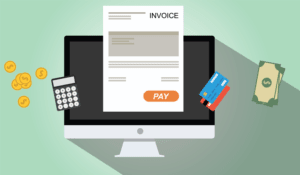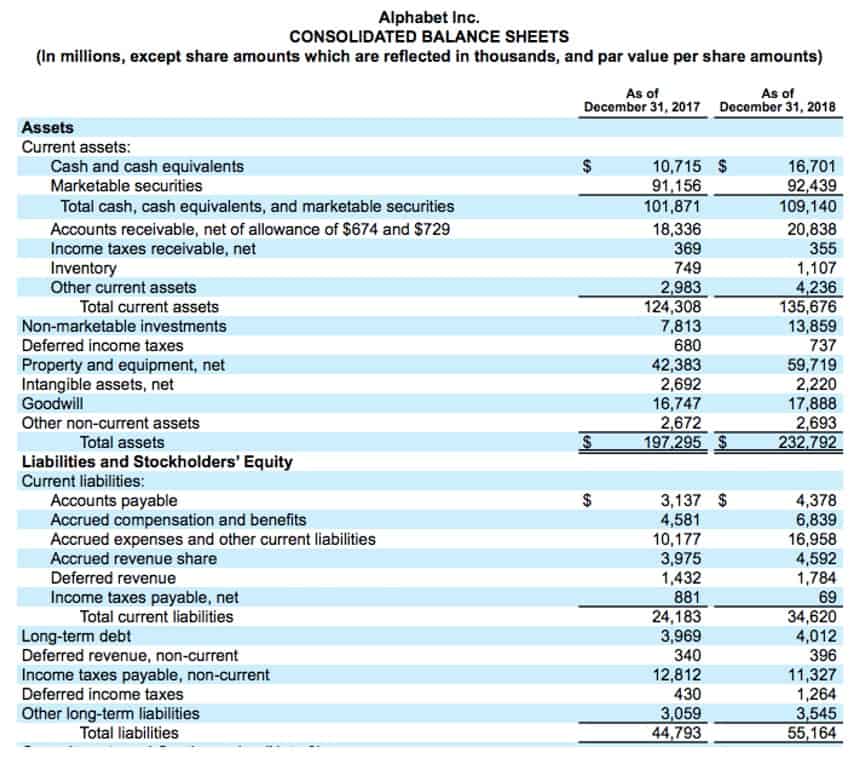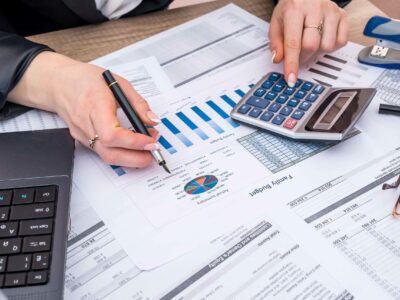Finance Strategists has an advertising relationship with some of the companies included on this website. We may earn a commission when you click on a link or make a purchase through the links on our site. All of our content is based on objective analysis, and the opinions are our own. Reducing cost can be the most difficult option as it will most likely mean labor reduction or negotiating to spend less with your suppliers.
Create a Free Account and Ask Any Financial Question
However, when CM is expressed as a ratio or as a percentage of sales, it provides a sound alternative to the profit ratio. You need to fill in the following inputs to calculate the contribution margin using this calculator. Accordingly, the per-unit cost of manufacturing a single packet of bread consisting of 10 pieces each would be as follows. The electricity expenses of using ovens for baking a packet of bread turns out to be $1. Therefore, we will try to understand what is contribution margin, the contribution margin ratio, and how to find contribution margin.
What are Variable Costs?
In our example, the sales revenue from one shirt is $15 and the variable cost of one shirt is $10, so the individual contribution margin is $5. This $5 contribution margin is assumed to first cover fixed costs first and then realized as profit. Contribution margin, gross margin, and profit are different profitability measures of revenues over costs. Gross margin is shown on the income statement as revenues minus cost of goods sold (COGS), which includes both variable and allocated fixed overhead costs. The higher the percentage, the more of each sales dollar is available to pay fixed costs.
Contribution Margin Ratio Formula
Variable costs, such as implants, vary directly with the volume of cases performed. On the other hand, the gross margin metric is a profitability measure that is inclusive of all products and services offered by the company. Instead of looking at the profitability of a company on a consolidated basis with all products grouped together, the contribution margin enables product-level margin analysis on a per-unit basis.
Ask Any Financial Question
The business can also use its contribution margin analysis to set sales commissions. A mobile phone manufacturer has sold 50,000 units of its latest product offering in the first half of the fiscal year. The selling price per unit is $100, incurring variable manufacturing costs of $30 and variable selling/administrative expenses of $10. As a result, the contribution margin for each product sold is $60, or a total for all units of $3 million, with a contribution margin ratio of .60 or 60%. The contribution margin formula is calculated by subtracting total variable costs from net sales revenue.
Such an analysis would help you to undertake better decisions regarding where and how to sell your products. The primary difference is fixed overhead is included in cost of goods sold, while fixed overhead is not considered in the calculation for contribution margin. As contribution margin will have fewer costs, contribution margin will likely always be higher than gross margin.
Gross margin is synonymous with gross profit margin and includes only revenue and direct production costs. It does not include operating expenses such as sales and marketing expenses, or other items such as taxes or loan interest. Gross margin would include a factory’s direct labor and direct materials costs, but not the administrative costs for operating the corporate office.
Fixed costs are usually large – therefore, the contribution margin must be high to cover the costs of operating a business. Contribution format income statements can be drawn up with data from more than one year’s income statements, when a person is interested in tracking contribution margins over time. Perhaps even more usefully, they can be drawn up for each product line or service. Here’s https://www.bookkeeping-reviews.com/ an example, showing a breakdown of Beta’s three main product lines. For a quick example to illustrate the concept, suppose there is an e-commerce retailer selling t-shirts online for $25.00 with variable costs of $10.00 per unit. The Contribution Margin is the revenue from a product minus direct variable costs, which results in the incremental profit earned on each unit of product sold.
If the contribution margin for an ink pen is higher than that of a ball pen, the former will be given production preference owing to its higher profitability potential. The contribution margin ratio is also known as the profit volume ratio. This is because it indicates the rate of profitability of your business.
The $30.00 represents the earnings remaining after deducting variable costs (and is left over to cover fixed costs and more). In 2022, the product generated $1 billion in revenue, with 20 million units sold, alongside $400 million in variable costs. The resulting ratio compares the contribution margin per unit to the selling price of each unit to understand the specific costs of a particular product. The following formula shows how to calculate contribution margin ratio. The contribution margin ratio (CMR) expresses the contribution margin as a percentage of revenues.
As a business owner, you need to understand certain fundamental financial ratios to manage your business efficiently. These core financial ratios include accounts receivable turnover ratio, debts to assets ratio, gross margin ratio, etc. Sign up for a free trial of Deputy and see how you can easily work out your labor costs, decide whether these costs are fixed or variable, and easily schedule your staff.
11 Financial is a registered investment adviser located in Lufkin, Texas. 11 Financial may only transact business in those states in which it is registered, or qualifies for an exemption or exclusion from registration requirements. 11 Financial’s website is limited to the dissemination of general information pertaining to its advisory services, together with access to additional investment-related information, publications, and links. If the company realizes a level of activity of more than 3,000 units, a profit will result; if less, a loss will be incurred.
For an example of contribution margin, take Company XYZ, which receives $10,000 in revenue for each widget it produces, while variable costs for the widget is $6,000. The contribution margin is calculated by subtracting variable costs from revenue, then dividing the result by revenue, or (revenue – variable costs) / revenue. Thus, the contribution margin in our example is 40%, or ($10,000 – $6,000) / $10,000. The fixed costs of $10 million are not included in the formula, however, it is important to make sure the CM dollars are greater than the fixed costs, otherwise, the company is not profitable.
Textbook content produced by OpenStax is licensed under a Creative Commons Attribution-NonCommercial-ShareAlike License . The following frequently asked questions (FAQs) and answers relate to contribution margin. This website is using a security service to protect itself from online attacks. There are several actions that could trigger this block including submitting a certain word or phrase, a SQL command or malformed data. For instance, in Year 0, we use the following formula to arrive at $60.00 per unit. As of Year 0, the first year of our projections, our hypothetical company has the following financials.
Management should also use different variations of the CM formula to analyze departments and product lines on a trending basis like the following. The contribution margin is given as a currency, while the ratio is presented as a percentage. There is no definitive answer to this question, as it will vary depending on the specific business and its operating costs. However, a general rule of thumb is that a Contribution Margin above 20% is considered good, while anything below 10% is considered to be relatively low. Thus, at the 5,000 unit level, there is a profit of $20,000 (2,000 units above break-even point x $10).
Furthermore, an increase in the contribution margin increases the amount of profit as well. This café owner has a higher contribution margin from selling coffees but the muffin sales are much more profitable (83% vs 60%). Both product lines are delivering value for the café with relatively high margins, but higher profits could be achieved if the café focused on selling a higher number of muffins. Technically, gross margin is not explicitly required as part of externally presented financial statements.
These costs may be higher because technology is often more expensive when it is new than it will be in the future, when it is easier and more cost effective to produce and also more accessible. The same will likely happen over time with the cost of creating and using driverless transportation. It provides one way to show the profit potential of a particular product offered by a company and shows the portion of sales that helps to cover the company’s fixed costs. Any remaining revenue left after covering fixed costs is the profit generated. Dobson Books Company sells textbook sets to primary and high schools.
- Take your learning and productivity to the next level with our Premium Templates.
- At a contribution margin ratio of \(80\%\), approximately \(\$0.80\) of each sales dollar generated by the sale of a Blue Jay Model is available to cover fixed expenses and contribute to profit.
- The contribution margin may also be expressed as fixed costs plus the amount of profit.
- To understand how profitable a business is, many leaders look at profit margin, which measures the total amount by which revenue from sales exceeds costs.
When the contribution margin is calculated on a per unit basis, it is referred to as the contribution margin per unit or unit contribution margin. You can find the contribution margin per unit using the equation shown below. For example, assume that the students are going to lease vans from their university’s motor pool to drive to their conference. A university van will hold eight passengers, at a cost of $200 per van.
The formula to calculate the contribution margin ratio (or CM ratio) is as follows. For League Recreation’s Product A, a premium baseball, the selling price per unit is $8.00. Calculate contribution margin for the overall business, for each product, and as a contribution margin ratio. Calculations with given assumptions follow in the Examples of Contribution Margin section. A low margin typically means that the company, product line, or department isn’t that profitable. An increase like this will have rippling effects as production increases.
The contribution margin is when you deduct all connected variable costs from your product’s price, which results in the incremental profit earned for each unit. This shows whether your company can cover variable costs with revenue. On the other hand, internal management may be most interested in the costs that go into manufacturing a good that are controllable. The contribution margin ratio, often abbreviated as “CM ratio”, expresses the residual profits generated from each unit of product sold, once all variable costs are subtracted from product revenue. Calculating contribution margin (the difference between sales revenue and variable costs) is an effective financial analysis tool for making strategic business decisions. Similarly, we can then calculate the variable cost per unit by dividing the total variable costs by the number of products sold.
Gross margin encompasses all costs of a specific product, while contribution margin encompasses only the variable costs of a good. While gross profit is more useful in identifying whether a product is profitable, contribution margin can be used to determine when a company will breakeven or how well it will be able to cover fixed costs. The contribution margin is important because it helps your business determine whether selling prices at least cover variable costs that change depending on the activity level. Knowing your company’s variable vs fixed costs helps you make informed product and pricing decisions with contribution margin and perform break-even analysis.
In our example, the sales revenue from one shirt is \(\$15\) and the variable cost of one shirt is \(\$10\), so the individual contribution margin is \(\$5\). This \(\$5\) contribution margin is assumed to first cover fixed costs first and then realized as profit. The key component of the contribution per unit calculation that can cause difficulty is the variable cost. This should only include those costs that vary directly with revenues.
Now, this situation can change when your level of production increases. As mentioned above, the per unit variable cost decreases with the increase in the level of production. Sales revenue refers to the total income your business generates as a result of selling goods or services. Furthermore, sales revenue can be categorized into gross and net sales revenue.
Your unit contribution margin is $2.50 ($12 selling price – $9.50 variable costs), which is higher than the $2 unit contribution margin on your giraffe and llama. If your business has excess capacity — extra space in your factory to produce see top 10 analytics and business intelligence trends for 2021 a new stuffed animal — then you should accept this order. In the next part, we must calculate the variable cost per unit, which we’ll determine by dividing the total number of products sold by the total variable costs incurred.
In the past year, he sold $200,000 worth of textbook sets that had a total variable cost of $80,000. Thus, Dobson Books Company suffered a loss of $30,000 during the previous year. It will depend on your industry and product line as to what is deemed a satisfactory or good contribution margin.
This information is useful for determining the minimum possible price at which to sell a product. In essence, never go below a contribution per unit of zero; you would otherwise lose money with every sale. The only conceivable reason for selling at a price that generates a negative contribution margin is to deny a sale to a competitor.
In fact, we can create a specialized income statement called a contribution margin income statement to determine how changes in sales volume impact the bottom line. For the month of April, sales from the Blue Jay Model contributed \(\$36,000\) toward fixed costs. Therefore, the unit contribution margin (selling price per unit minus variable costs per unit) is $3.05. The company’s contribution margin of $3.05 will cover fixed costs of $2.33, contributing $0.72 to profits.
To resolve bottlenecks, contribution margin can be used to decide which products offered by the business are more profitable and, therefore, more advantageous to produce, given limited resources. Preference is given to products that provide a high contribution margin. The profitability of our company likely benefited from the increased contribution margin per product, as the contribution margin per dollar increased from $0.60 to $0.68. The analysis of the contribution margin facilitates a more in-depth, granular understanding of a company’s unit economics (and cost structure).
Management accountants identify financial statement costs and expenses into variable and fixed classifications. Variable costs vary with the volume of activity, such as the number of units of a product produced in a manufacturing company. Variable costs are not typically reported on general purpose financial statements as a separate category.
However, the closer the contribution margin is to 100%, the more funds are available to cover the fixed costs of the business and deliver a higher profit. Contribution margin is not intended to be an all-encompassing measure of a company’s profitability. However, contribution margin can be used to examine variable production costs. Contribution margin can also be used to evaluate the profitability of an item and calculate how to improve its profitability, either by reducing variable production costs or by increasing the item’s price.
Selling price per unit times number of units sold for Product A equals total product revenue. At the product level In a manufacturing company, variable costs change, depending on the volume of production. As more units are produced, total variable costs for the product increase. Contribution margin (sales revenue minus variable costs) is used to evaluate, add and remove products from a company’s product line and make pricing and sales decisions.
Managerial accountants also use the contribution margin ratio to calculate break-even points in the break-even analysis. In Cost-Volume-Profit Analysis, where it simplifies calculation of net income and, especially, break-even analysis. Get instant access to video lessons taught by experienced investment bankers. Learn financial statement modeling, DCF, M&A, LBO, Comps and Excel shortcuts. Here, we are calculating the CM on a per-unit basis, but the same values would be obtained if we had used the total figures instead. One common misconception pertains to the difference between the CM and the gross margin (GM).
Indirect materials and indirect labor costs that cannot be directly allocated to your products are examples of indirect costs. Furthermore, per unit variable costs remain constant for a given level of production. Thus, the level of production along with the contribution margin are essential factors in developing your business. Now, it is essential to divide the cost of manufacturing your products between fixed and variable costs. Direct materials are often typical variable costs, because you normally use more direct materials when you produce more items.
Knowing how to calculate contribution margin allows us to move on to calculating the contribution margin ratio. To get the ratio, all you need to do is divide the contribution margin by the total revenue. It represents the incremental money generated for each product/unit sold after deducting the variable portion of the firm’s costs.







